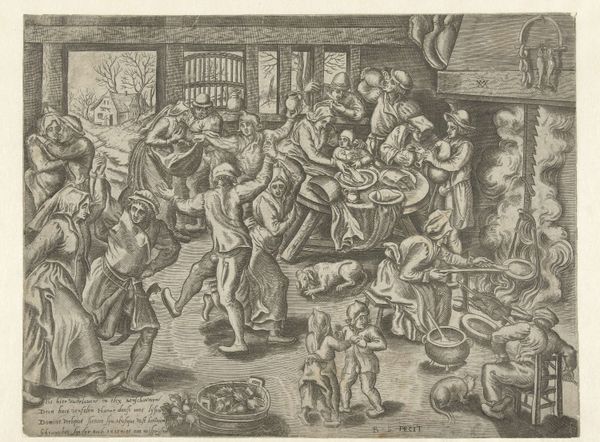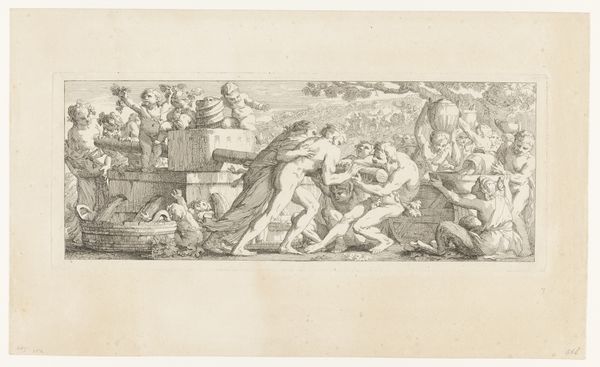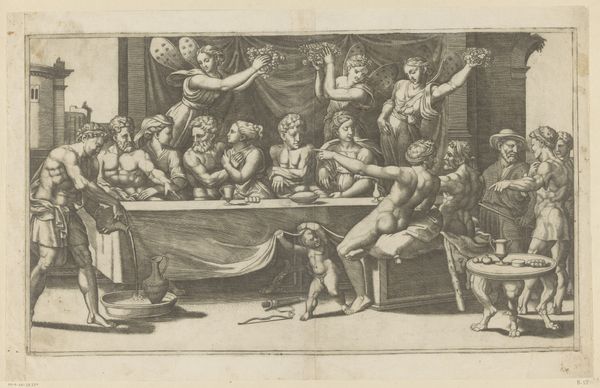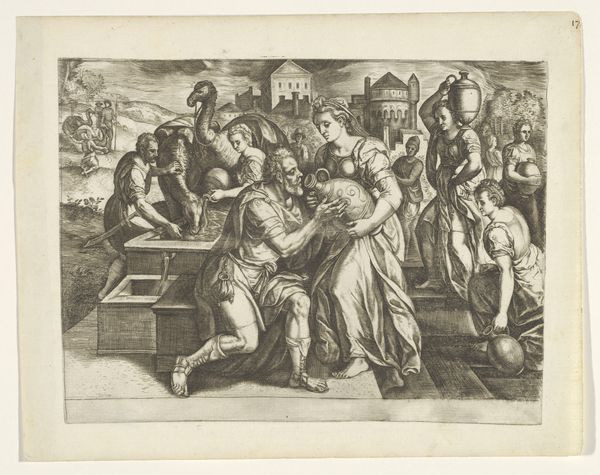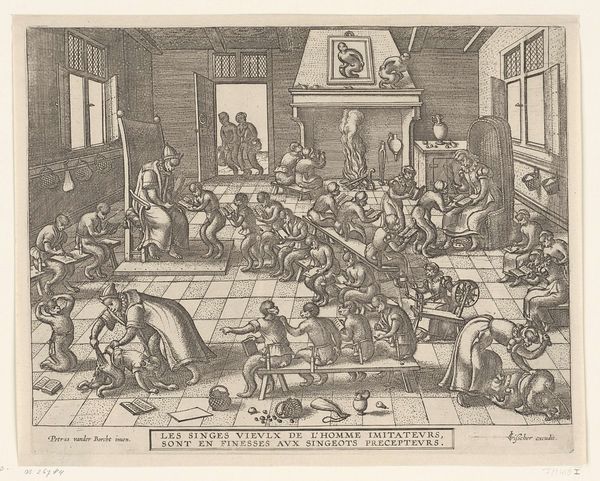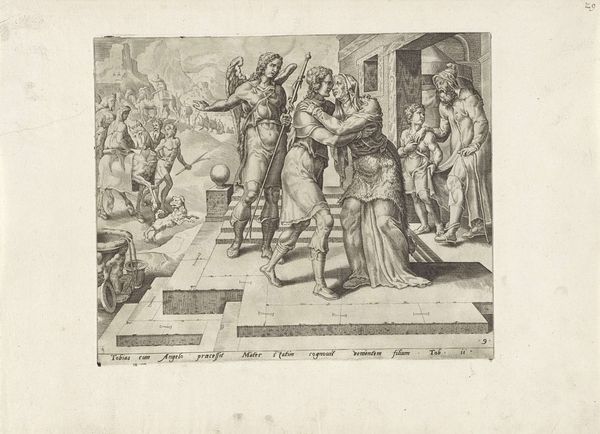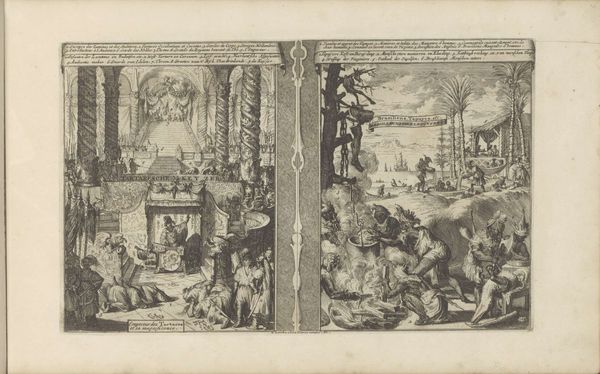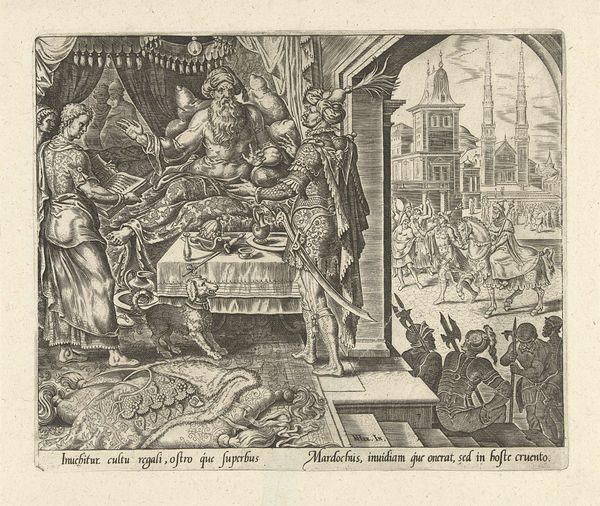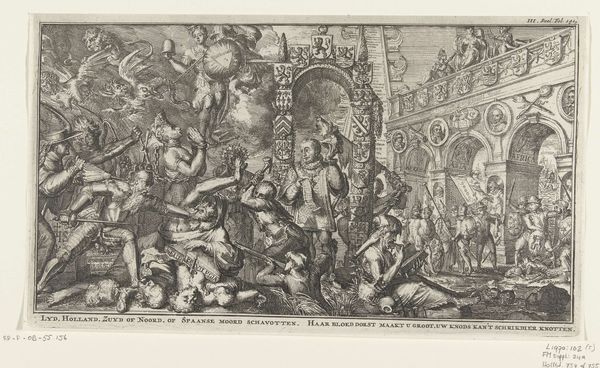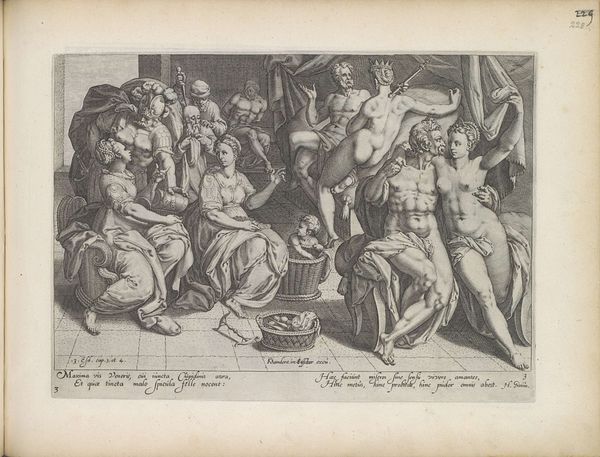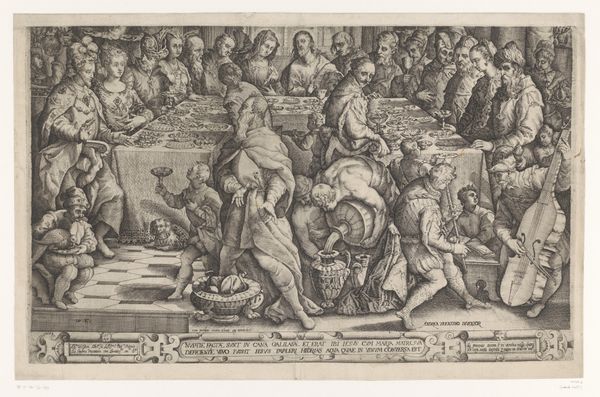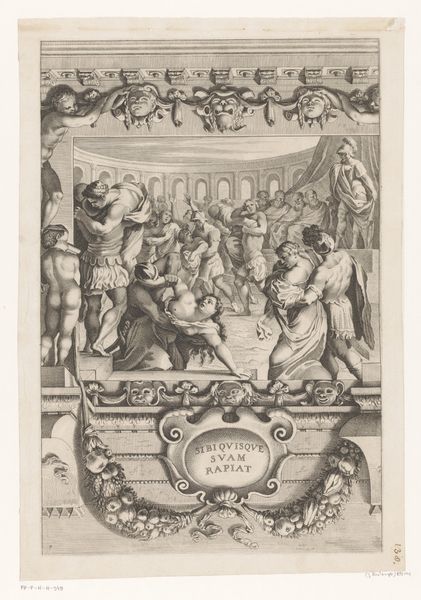
print, engraving
#
medieval
# print
#
old engraving style
#
folk-art
#
genre-painting
#
northern-renaissance
#
engraving
Dimensions: height 226 mm, width 300 mm
Copyright: Rijks Museum: Open Domain
Curator: Welcome. Today, we are looking at "Bruiloftsfeest, ca. 1600", or "Wedding Feast, circa 1600," an engraving created anonymously sometime between 1600 and 1649. It resides here at the Rijksmuseum. Editor: What strikes me first is the energy, that chaotic, joyous, and slightly debauched feeling. It's as though the entire village has erupted in celebration. Curator: Indeed. Its charm is how it presents a very specific slice of life. Depictions of peasant weddings were a common subject in Northern Renaissance prints, often laden with moralizing messages about excess. The print functions as a form of social commentary, revealing details of ordinary lives, but with an intention. Editor: It's fascinating how these seemingly straightforward scenes also subtly reinforce class distinctions. Look at the way the figures are grouped: the presumably wealthier, more demurely dressed figures at the formal table contrast with the revelry spilling out into the foreground. It's almost a staged performance of societal norms. Are there implicit gender dynamics at play here? Curator: Almost certainly. The women near the serving area contrast with the tipsy and inebriated male figures on the ground. How do these scenes reaffirm established codes of conduct in this Northern Renaissance community? Editor: We might see that with more detail here. See how much activity there is? What’s the perspective the printmaker took? And what about that building structure in the background? Curator: This genre scene provides details on all types of rituals including preparing foods and drinks. Given that this artwork lacks any additional details about the artist and engraver we might question how this reflects social-cultural beliefs and practices during the Northern Renaissance. And where is this celebration happening? Editor: This reminds me that even in celebrations like weddings that can signify union and community can be a tool of oppression that reifies gendered roles in the kitchen for labor and submission. We might ask here what kind of critical interventions could be made at similar contemporary events to deconstruct this historical binary? Curator: Considering this depiction within the framework of historical representations of women offers a vital perspective. It allows us to unpack the enduring nature of social imbalances embedded in seemingly innocuous traditions, doesn’t it? Editor: Absolutely, seeing this through a contemporary lens can inform a radical reimagining of communal celebration and equity.
Comments
No comments
Be the first to comment and join the conversation on the ultimate creative platform.
